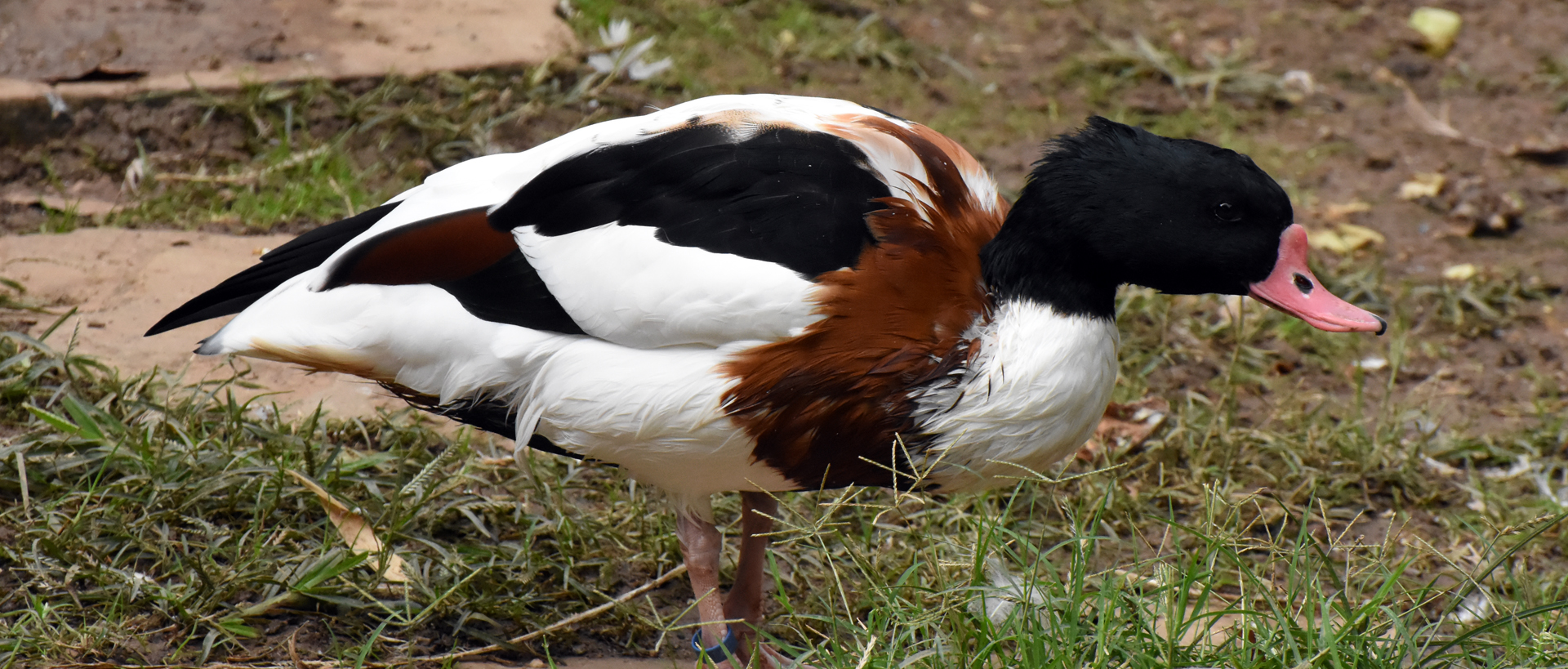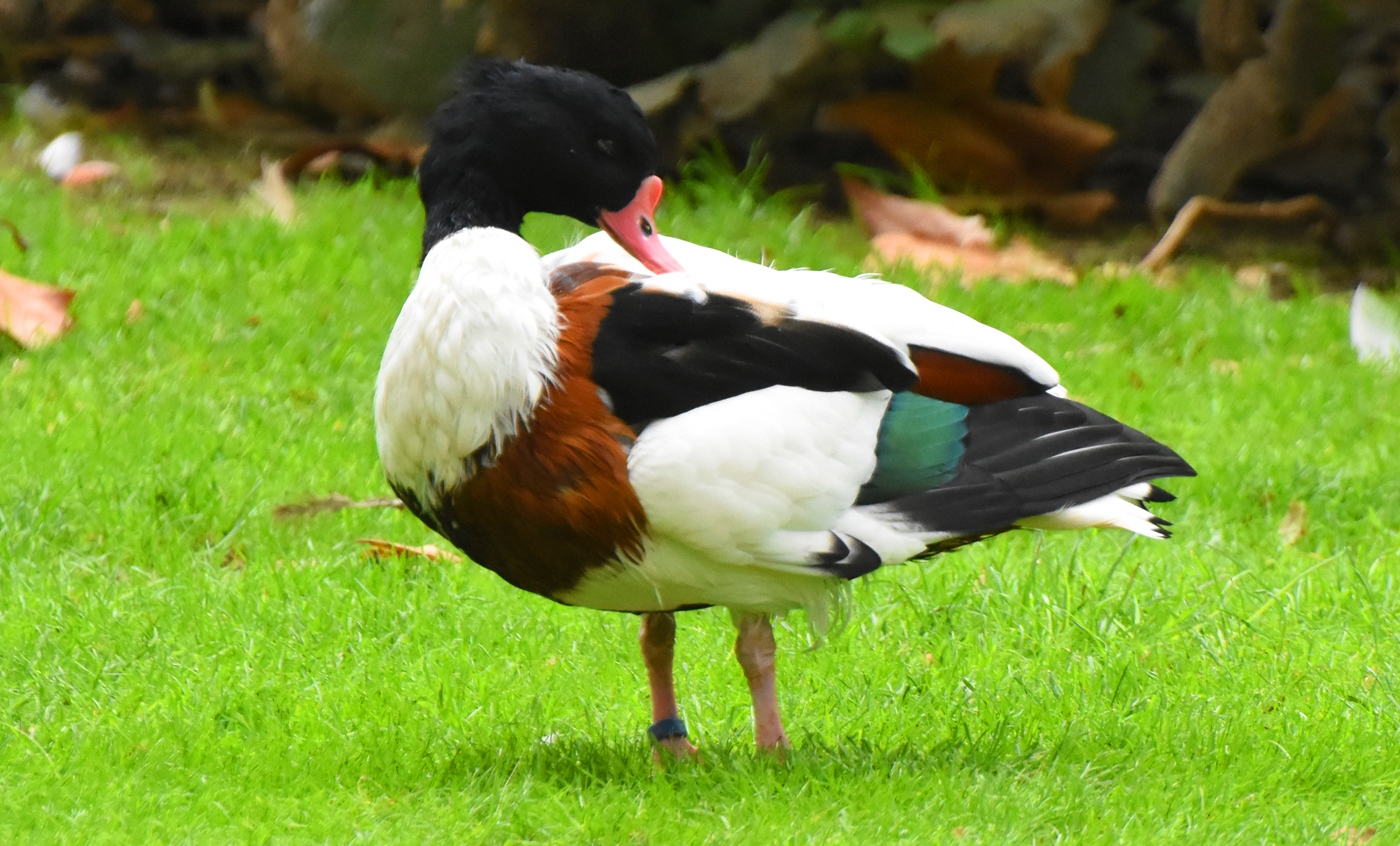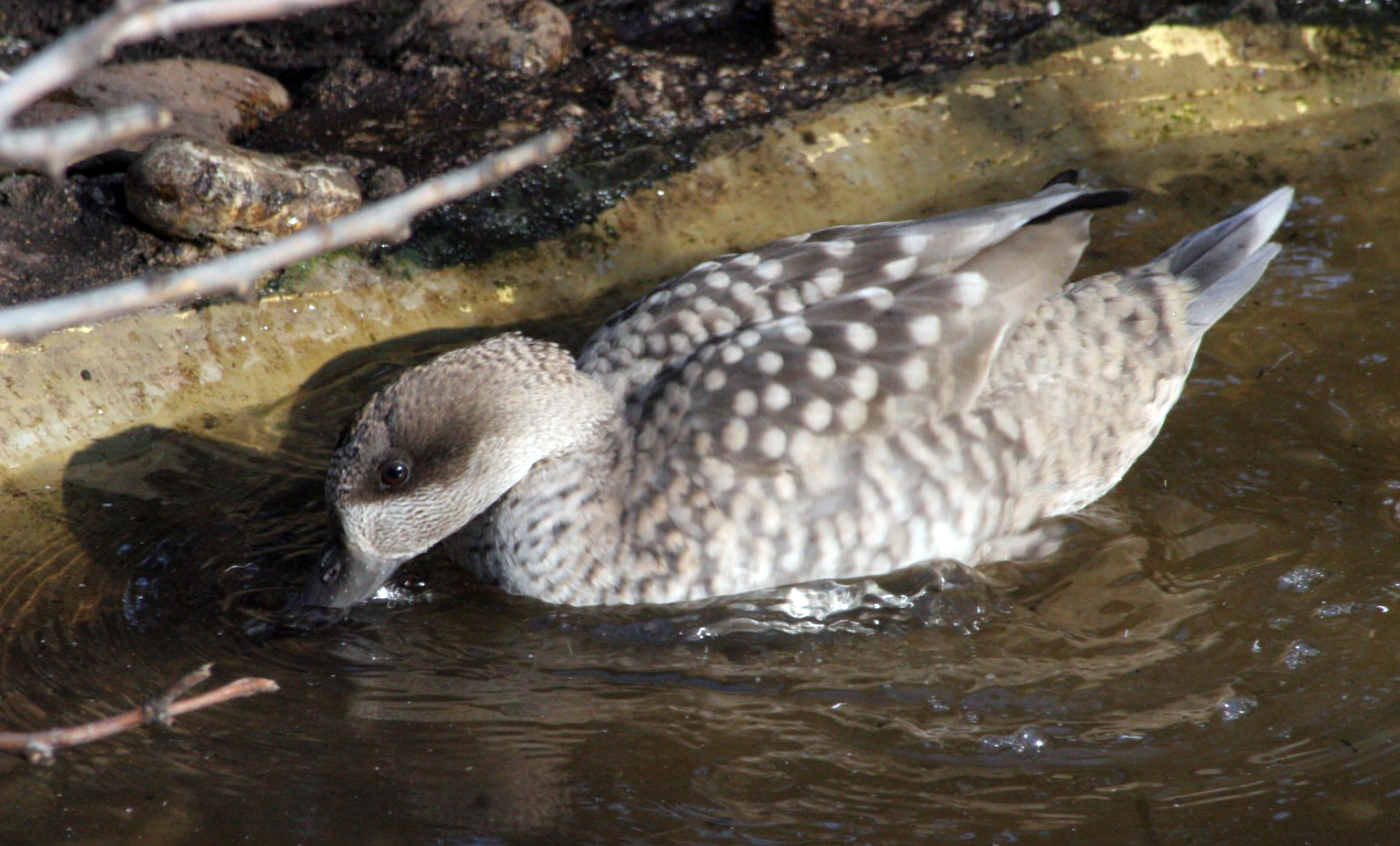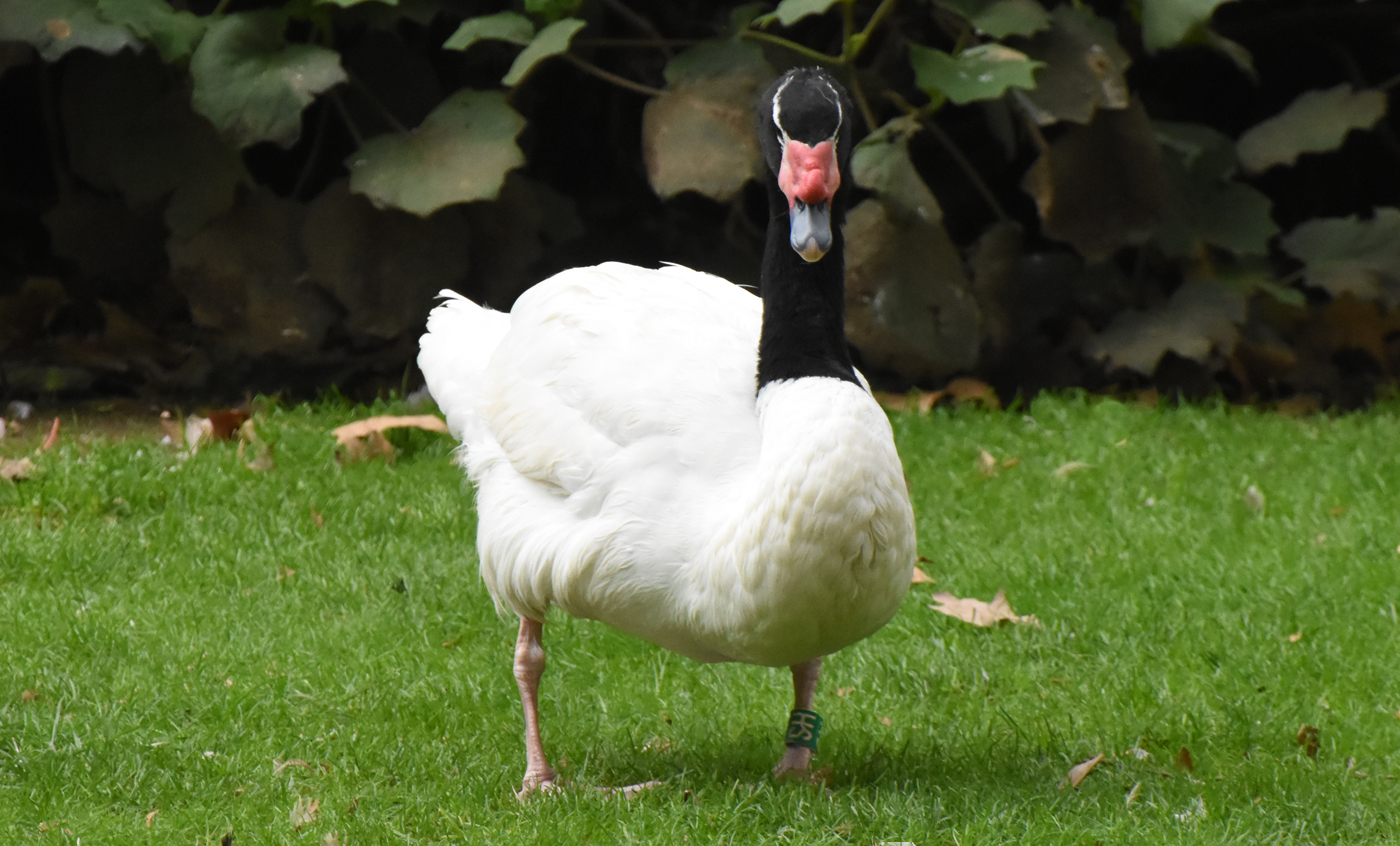Common shelduck
The common shelduck displays black and white colouring with a brown strip on the chest that makes it unmistakable. Its beak is scarlet and the males have a more developed tubercle at the base.
It lives in seawater ponds and lagoons, preferably high-salinity water, where it feeds on invertebrates, especially molluscs, insects and crustaceans, as well as seaweed and grasses. It builds its nests on the ground, hidden among the undergrowth, and it may lay up to 12 or 13 eggs.
Natural habit
Wetlands and coastal areas of northwest Europe and various parts of the Mediterranean eastward to the north east China and south of Iran and Afghanistan.
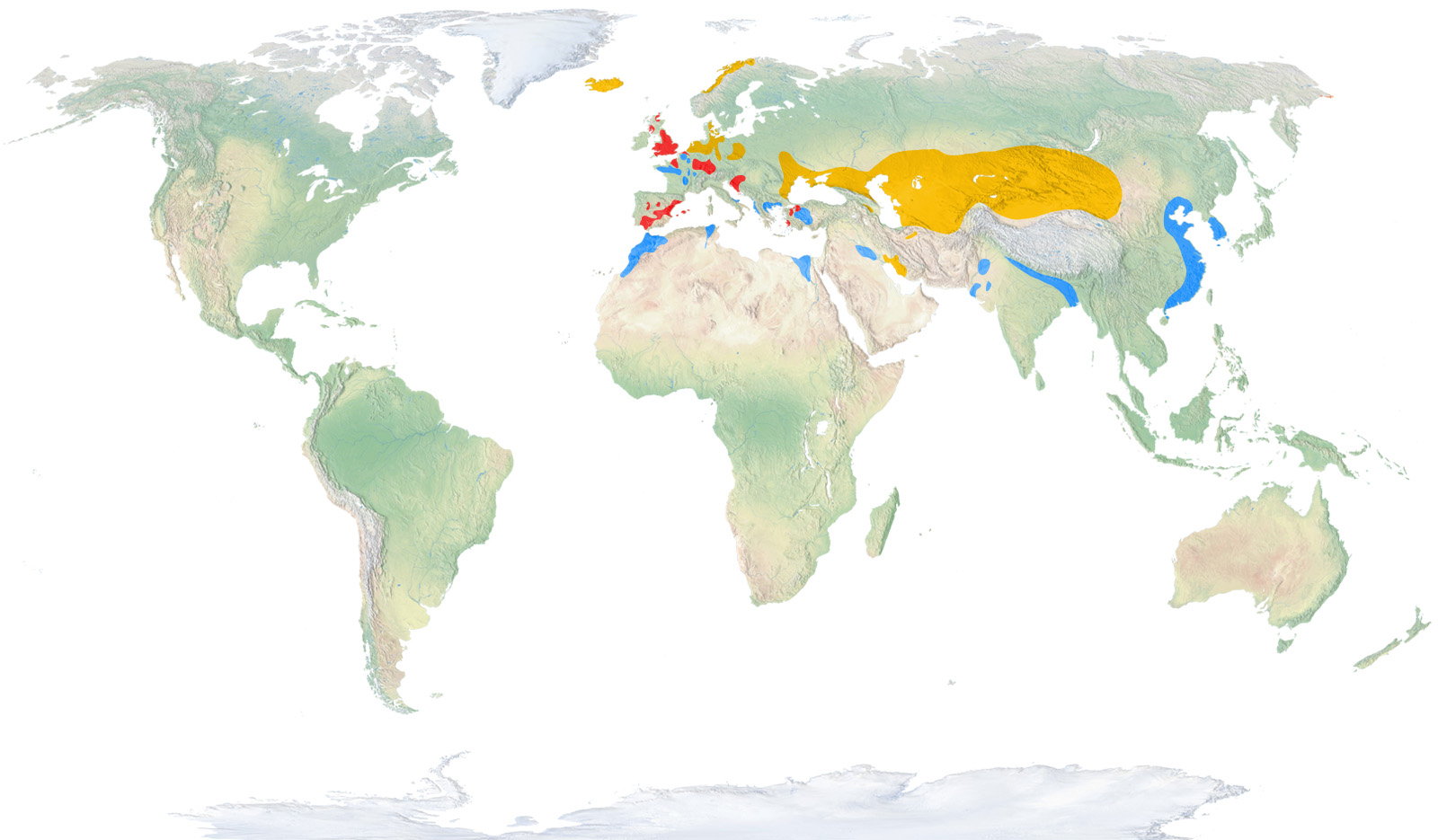
- Distribution / Resident
- Breeding
- Wintering
- Subspecies
Risk level
- Extint
- Extint in the wild
- Critically endangered
- In Danger
- Vulnerable
- Near threatened
- Minor concern
- Insufficient data
- Not evaluated
Taxonomy
Physical characteristics
Biology
Reproduction
Biology
The common shelduck has a white and black hue with a brown stripe on its breast that makes it unmistakeable. Its reddish pink bill bears a prominent knob on the base, which is more developed in males. It is a large duck that can weight almost 1.5 kg, mostly males, which are slightly bigger than females.
It lives in lagoons and ponds, preferably in highly salty waters. However, it occasionally occupies fresh water areas in certain spots of its distribution area, river courses and lakes, in semi-desert areas.
It feeds on invertebrates, especially molluscs, insects and crustaceans, as well as seaweeds and grass.
The reproductive season generally begins in mid-April or May, upon the arrival of the older animals to the breeding areas, as an adaptation to improve reproductive performance by choosing the most favourable regions. They are monogamous and form stable couples, which migrate and moult separately. They from small breeding colonies, although sometimes do so individually or far from the other ducks. It nests on the ground, hidden among vegetation, although sometimes it takes advantages of holes in trees, up to 8 metres high. It lays three to eighteen creamy coloured eggs, normally between eight and ten, in intervals of 24 hours approximately, that the female broods for 28 to 31 days, while the male guards the area.a.
It can feed for more than twelve hours a day. It usually feeds at night in order to take advantage of the tide. It is partially migratory; the ones inhabiting the northernmost areas usually migrate south during winter, looking for food and warmer temperatures.
It is not endangered in most of its distribution area, especially in the western Palearctic realm, where populations have been growing for the last forty years. Their usual large concentrations of hibernating or moulting birds can make them vulnerable to natural disasters or sickness.




